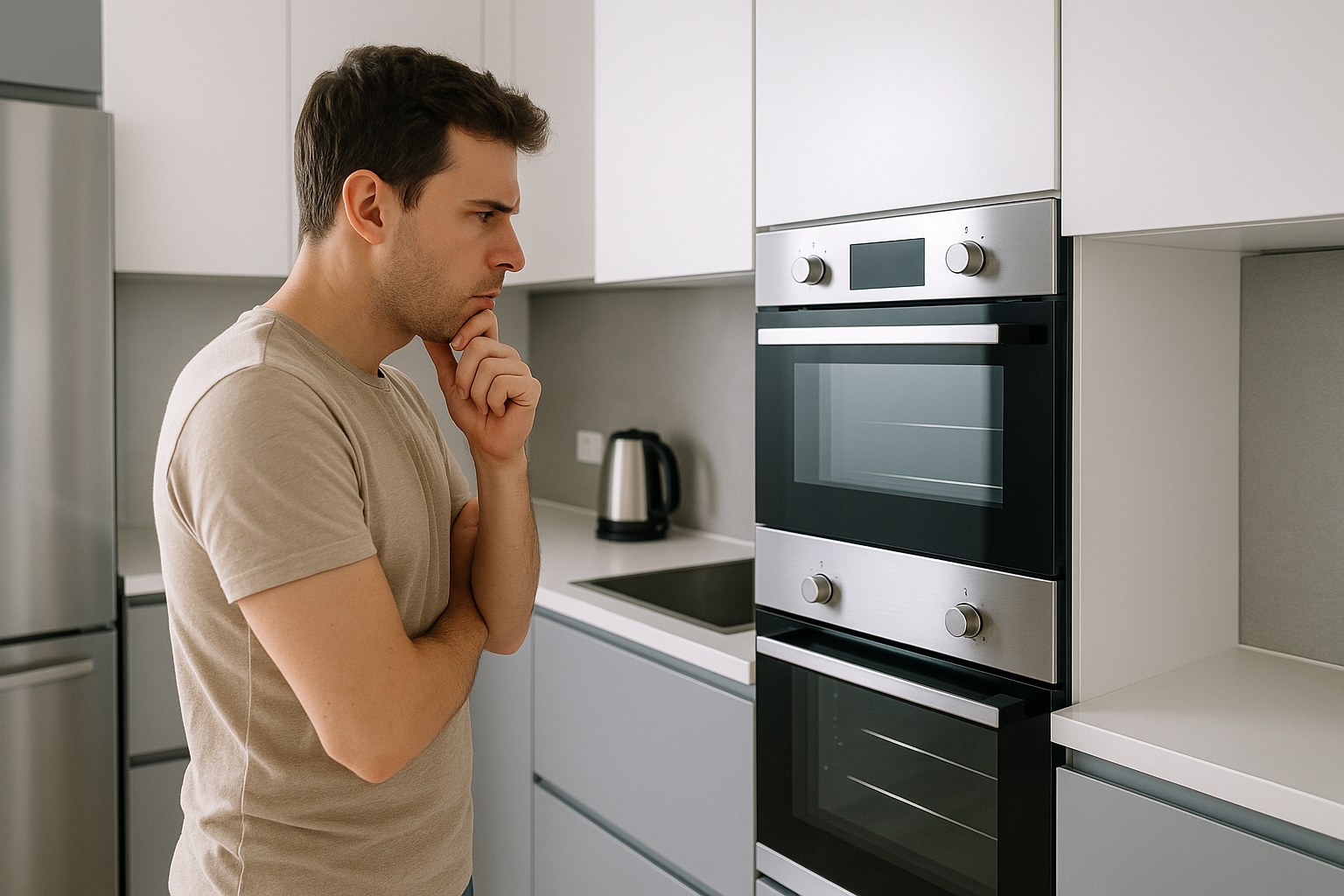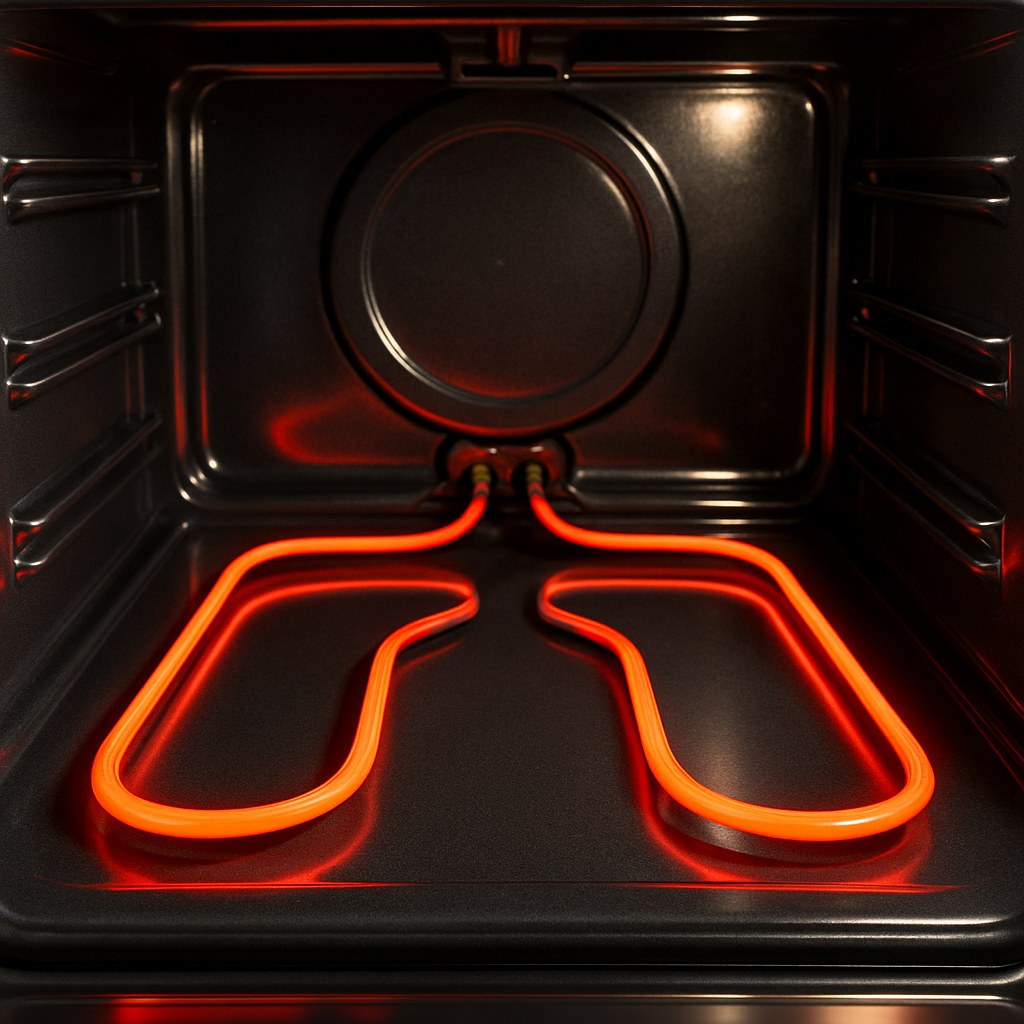You’ve prepped the ingredients, the family is getting hungry, and you turn to your trusty oven only to be met with… nothing. No light, no preheating hum, no reassuring beep. An oven that won’t start or heat up is one of the most frustrating kitchen appliance failures, but don’t call for takeout just yet.
The good news is that this is a very common issue, and the fix is often surprisingly simple. Many times, it's a basic power problem or a single, inexpensive part that has failed. Whether you have an electric or a gas model, we’re here to walk you through the troubleshooting process step-by-step, just like a friendly expert on the phone.
Let's get your oven back in business and save dinner!

Safety First: What to Know Before You Start
Before we dive in, let’s talk safety. You're dealing with either a high-voltage electrical appliance or a gas line, so caution is key.
- For Electric Ovens: When inspecting components like the heating element, it's always safest to turn off the power at the circuit breaker.
- For Gas Ovens: Your nose is your best tool. If you ever smell a strong gas odor (like rotten eggs), stop what you're doing immediately. Don't turn any lights or appliances on or off. Open the windows to ventilate the area, leave the house, and call your gas utility company from a safe distance.
Now that we have the safety talk out of the way, let's figure out what's going on with your oven.
Step 1: The Initial Power Check
First, we need to determine if your oven is getting any power at all. This simple five-minute check can often solve the mystery without you having to pull the oven out from the wall.
- Check the Door: This might sound silly, but many modern ovens have a safety feature that prevents them from starting if the door isn't fully latched. Give the oven door a firm push to make sure it's clicked completely shut.
- Wake Up the Display: Press any button on the oven's control panel. Sometimes, the display goes into a sleep mode. See if you can wake it up.
- Try the Light: Press the button for the interior oven light. If the light turns on, you know the oven is receiving power, and the problem is likely with a heating component. If it doesn't, we're probably looking at a power supply issue.
- Listen for Beeps: Turn a temperature knob or press a baking function button. Do you hear any beeps or clicks? These are signs of life.
- Look for Error Codes: Check the display for any error codes (like "F1" or "E3"). If you see one, write it down. A quick search for that specific code for your oven model can often point you directly to the problem.
After these checks, you'll be on one of two paths.
- If the display, light, and sounds are all dead: Your oven isn't getting power. Let's move to Step 2.
- If the display and light work, but the oven won't heat: Your oven has power, but a component is failing. Skip ahead to Step 3.
Step 2: No Signs of Life? Check the Circuit Breaker
If your oven seems completely dead, the most likely culprit is a tripped circuit breaker. Ovens are powerful appliances that draw a lot of electricity, and they are typically on a dedicated circuit.
- Locate Your Electrical Panel: Find your home's main electrical panel (or breaker box). It's usually in the basement, garage, a utility closet, or sometimes a hallway.
- Find the Oven's Breaker: The inside of the panel door should have a legend that maps out the circuits. Look for one labeled "Oven," "Range," or "Stove." It will likely be a "double-pole" breaker, which is twice as wide as the standard breakers and may have two switches linked together.
- Reset the Breaker: To properly reset it, you must first flip the breaker fully to the "OFF" position. You might feel a click.
- Wait 10 Seconds: Give it a brief pause to ensure the internal mechanism fully resets.
- Flip it Back On: Firmly push the breaker back to the "ON" position.
- Test the Oven: Go back to your oven and try turning it on again.
If the oven powers on, you've likely solved the problem! A breaker can sometimes trip for no specific reason. However, if it trips again soon, you may have an electrical issue that requires a professional. Assuming it stays on, try setting it to bake at 350°F for 10-15 minutes to confirm it’s heating properly. If it is, you're ready to cook!
If resetting the breaker didn't restore power, the issue might be with the outlet or your home's wiring. At this point, it's time to call a licensed electrician.
Step 3: Power is On, But It's Not Heating Up
So, your oven's display lights up and the clock is on, but it refuses to get warm. This tells us the problem lies within the oven itself, specifically with the parts responsible for generating heat. The next step depends on what kind of oven you have.
For Electric Ovens: Check the Bake Element
In an electric oven, the heat comes from large metal coils called heating elements. There's typically one on the bottom (the bake element) and one on the top (the broil element). The bake element does most of the work and is the most common part to fail.
- Set the Oven to Bake: Turn your oven to "Bake" at 350°F and press start.
- Look for the Glow: After a couple of minutes, look through the oven door window. The bake element at the bottom of the oven should begin to glow a bright, consistent orange-red.
- Observe Carefully: If you see dark spots, or if only parts of the element are glowing, it's a clear sign that the element is failing and needs to be replaced. If it doesn't glow at all after 5 minutes, it has likely burned out completely.

A faulty bake element is the number one reason an electric oven with power won't heat. Replacing it can be a DIY job for a handy person, but if you're not comfortable, it's a straightforward fix for an appliance technician.
For Gas Ovens: Check the Igniter
Gas ovens are a bit more complex. Most modern models don't use a constant pilot light; instead, they use a device called a glow bar igniter. This igniter has two jobs: first, it gets incredibly hot and glows, and second, once it's hot enough, it signals the gas valve to open. A weak or failing igniter is the most common reason a gas oven won't heat.
- Check Other Gas Appliances: First, quickly check if other gas appliances in your home (like your stovetop or water heater) are working. If they aren't, the problem might be with your main gas supply.
- Set the Oven to Bake: Turn the oven to "Bake" at 350°F and press start.
- Look and Listen: You should hear a click, and then you'll need to look for the igniter's glow. It’s usually a small, rectangular component located at the back of the oven, near the gas burner tube. You may need to look through the vents in the oven floor. After 30-90 seconds, you should see it start to glow orange.
- The Smell Test: Shortly after the igniter glows, you should hear a "whoosh" sound as the gas ignites and see a blue flame. If the igniter glows for over 90 seconds but there’s no flame, it's likely too weak to open the gas valve. This is a classic symptom of a bad igniter.
If you don't see any glow at all, the igniter has failed completely. If you do see a glow but the gas never ignites, the igniter needs to be replaced.
How Much Does It Cost to Fix an Oven?
The cost of repair depends heavily on the problem. While a DIY fix can be very cheap, hiring a pro has its own price range.
- DIY Parts: A new electric bake element can cost anywhere from $25 to $75. A gas oven igniter typically runs between $40 and $150.
- Professional Repair: According to HomeAdvisor, the average professional oven repair costs between $150 and $350. This usually includes a diagnostic fee ($75-$150) plus the cost of parts and labor.
- Electrician Visit: If the issue is with your circuit breaker or wiring, expect to pay an electrician $50 to $150 per hour.
While DIY can save money, calling a professional ensures the job is done safely and correctly, especially with complex electrical or gas systems.
When It's Time to Call for Help
Let's quickly recap when it's best to put down the tools and pick up the phone.
- Call an Electrician if: You reset the circuit breaker, but the oven still has no power.
- Call an Appliance Technician if: The oven has power, but you've identified a faulty bake element or gas igniter and aren't comfortable replacing it yourself.
- Call Your Gas Company if: You smell gas at any point during your diagnosis.
Take the Stress Out of Home Maintenance
Fixing an oven can feel empowering, but sometimes you need a helping hand. Whether it's a tricky appliance repair, a plumbing puzzle, or a mysterious electrical issue, managing your home can be overwhelming.
That's where Casa comes in. For more expert home maintenance advice, step-by-step DIY guides, and a simple way to connect with trusted, vetted professionals in your area, download the Casa app today. We put the power of a home expert right in your pocket, helping you tackle any project with confidence.

